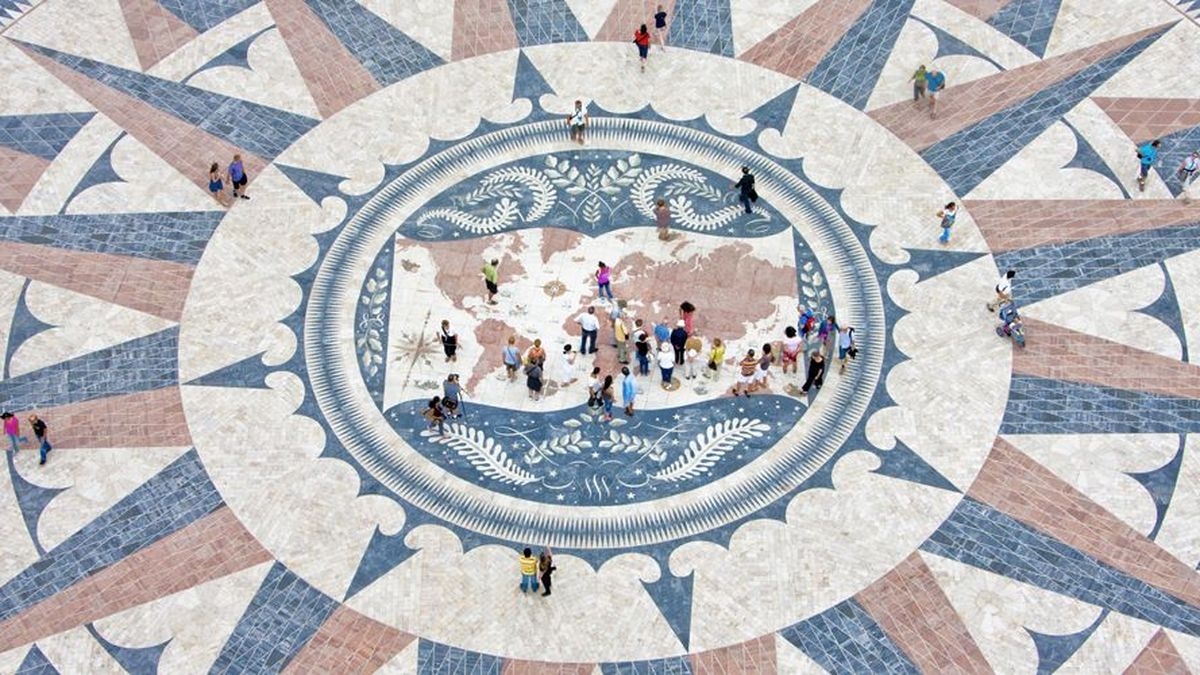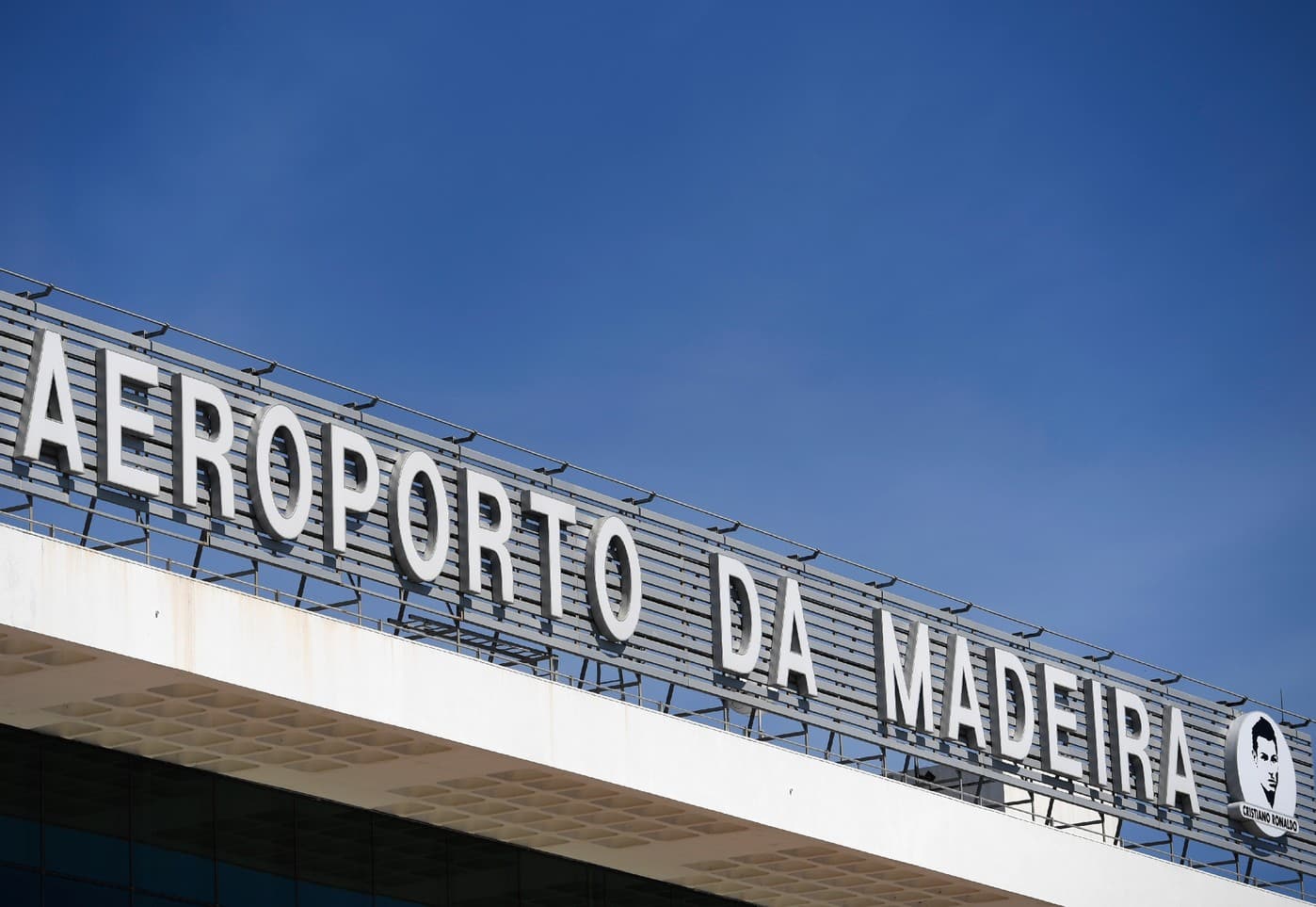
The mystery of mosaic pavements, a Portuguese invention copied around the world
Ah… those Portuguese sidewalks! You know, the ones that make you walk with your head down in Lisbon or Porto, not because you’re lost in thought, but because they’re just so beautiful (and, let’s be honest, a bit dangerous if you’re wearing heels !). Those little black-and-white stones, sometimes arranged in spirals, sometimes in waves, and sometimes so slippery they deserve a warning sign that says, “Caution: hazardous masterpiece.” Yes, you know exactly what I’m talking about the calçada portuguesa, or Portuguese mosaic pavement.
We walk on it every day, often without giving it much thought, but behind those stones lies a fascinating story, a touch of art… and a healthy dose of national pride. Because yes, ladies and gentlemen, these sidewalks didn’t come from anywhere else, they were born in Portugal, and since then, they’ve conquered the world (and rightly so, it’s something to be proud of! ).
An invention born from a lion (really)
The story begins in 1842 in Lisbon, in one of the most Portuguese places imaginable: the Castelo de São Jorge (you’ve probably heard of it!). At the time, the military governor, a certain General Eusébio Furtado, decided to pave the castle courtyard with a pattern inspired by… a lion’s footprints! Yes, really. The idea? To use small pieces of white and black limestone to create a design on the ground. The result was so striking that the city decided to extend the concept to other streets. And… TADAA (yes, the Netflix-style tadam if you like) the Portuguese mosaic pavement was born !
A few years later, the sidewalks of the Baixa district in Lisbon were covered with those now-famous black and white waves that remind us today of Copacabana. And that’s when we realize that… yes, Portugal invented something the rest of the world would later copy shamelessly, but tastefully.
From the Tagus to Copacabana, the international star of sidewalks
Because the Portuguese mosaic didn’t stay put, it crossed the ocean! First stop: Brazil, of course, where Portuguese craftsmen brought their art to life again in Rio de Janeiro, on the famous Copacabana promenade. Those iconic black-and-white waves, immortalized in millions of tourist photos, are actually a 100% Portuguese creation, inspired by the original Lisbon design.
But the calçada didn’t stop there… it went on to charm the world : you’ll find it in Angola, Mozambique, Cape Verde, Macau, and even in Paris and San Francisco, where some architects have taken inspiration from this uniquely Portuguese art of the ground. Proof that when the Portuguese export something, it’s not just wine or bacalhau !

A true art form (and a dying craft)
Here’s something you should know: every single mosaic is made and laid by hand. Yes, by hand. Stone after stone, one by one, placed carefully by artisans known as calceteiros. And believe me, it’s a real craft: hammer in one hand, stone in the other, a good eye for design, and an incredible amount of patience.
Their favorite tool is the marreta, a small double-headed hammer used to shape the stones. And their preferred materials? White limestone and black basalt which look absolutely stunning under the Portuguese sun.
But today, this know-how is fading. Many young people don’t want to pursue this trade anymore it’s physically demanding (spending all day on your knees isn’t easy !) and not very well paid. The result? Some cities are replacing traditional calçada with concrete sidewalks (gasp!), much to the despair of purists…
Between beauty and public hazard
Ah yes, let’s talk about the “small” downside of these sidewalks : they’re slippery. And not just a little. Especially when it rains! Lisbon suddenly turns into an open-air ice rink, and you quickly understand why locals walk carefully, eyes fixed on the ground. (Pro tip: avoid smooth soles, and above all, don’t chase tram 28 in the rain unless you enjoy unplanned acrobatics!)
Despite that, it’s impossible to stay mad at them. These pavements are part of Portugal’s soul, like azulejos on the walls. They tell the story of the country, its waves, its discoveries, its sense of elegance… right beneath our feet.
Patterns that speak Portuguese
What’s wonderful about the calçada is that it’s everywhere, yet never the same ! In Lisbon, you’ll find marine motifs: anchors, fish, waves. In Porto, more geometric designs and rosettes; in Coimbra, academic symbols. Each city tells its story through its stones.
And if you have a curious eye, take a closer look during your walks, some pavements hide Masonic or religious symbols, or even the initials of the artisans who made them. It’s a real open-air museum, free to visit and often overlooked (until you trip over it, let’s be honest !).
A heritage worth protecting
Good news : some municipalities have decided to take action! Lisbon, for instance, has launched training programs for new calceteiros to ensure this art doesn’t disappear. Associations are even campaigning for the calçada portuguesa to be recognized as Intangible Cultural Heritage, and honestly, we can only applaud that. Because few countries can claim to have sidewalks as beautiful as a painting.
One last tip (and a wink)
Next time you’re walking down a Portuguese street, lift your eyes to admire the azulejos… then lower them again to admire the calçada. Take a photo, sure, but mostly, just look, it’s a piece of Portugal’s history, stone by stone, hand by hand.
And if you happen to slip a little? Well, just think of it as part of the full Portuguese experience: beauty, emotion… and a little imbalance, always with elegance (or not, if you’re as clumsy as me!).
So yes, these sidewalks can be treacherous at times but admit it : no other country makes you look up and down as much while walking. And that, my friends, is part of the charm.
Share this article
Suggested articles

Why do Portuguese cafés always serve such tiny espressos?
In Portugal, you don’t order “a coffee” — you ask for “uma bica”. This tiny word represents a national institution: a strong, aromatic espresso served in a small porcelain cup. For outsiders, it might look almost symbolic, but in Portugal, it’s not about size. It’s about rhythm and culture.

Cristiano Ronaldo doesn’t just have a museum… he also has an airport named after him!
Yes, he never ceases to amaze us, that Cristiano! The beloved child of Madeira doesn’t just have a collection of Ballon d’Ors or a line of underwear (yes, the one with the 4K abs on giant billboards—don’t pretend you haven’t seen it!). He also has… an airport named after him. That’s right! Because in Portugal, when people love, they don’t hold back—especially when it comes to CR7.

Why Do the Portuguese Love Cod So Much When It Doesn’t Live in Their Seas?
Portugal is a country turned toward the sea. Its coastline stretches for more than 800 kilometers, and yet the most emblematic fish of its cuisine, bacalhau (salted and dried cod), does not live in Portuguese waters. A curiosity that intrigues travelers and fascinates food lovers alike.

How “Saudade” Became the Most Famous Untranslatable Word in the World ?
Ah, saudade… that word that drifts through the Portuguese air like a fado note, that slips into conversations without ever really being translated. If you live in Portugal, you’ve definitely heard it (maybe even felt it) without quite knowing how to explain it ! And if you haven’t yet, brace yourself : once you understand saudade, it never leaves you.

Why Do the Portuguese Love Cod So Much if It Doesn’t Live in Their Waters?
It is one of Portugal’s greatest culinary paradoxes: a country proud of having one of the largest maritime zones in Europe, with kilometers of Atlantic coastline and ancient fishing traditions, has made its national fish one that doesn’t even swim in its waters. Cod is absent from the Portuguese sea, yet omnipresent in the nation’s culture, gastronomy, and collective imagination.


